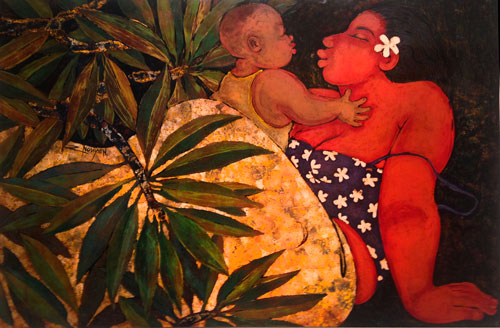Traditional Lacquer Painting has its roots in China dating back over 2000 years. It was introduced to Vietnam several centuries ago and has since been modernized when the French introduced western art and techniques in 1925.
Lacquer paint is harvested from trees similar to the harvesting of rubber from rubber trees. Vietnam has six native species that produce lacquer as a clear sap that is colored by the addition of iron to produce black or eggshell for white. Lacquer can be mixed with various natural and artificial dyes to produce bright colors.
Before a lacquer painting can be started, a lacquer board needs to be made. This process includes applying several layers of lacquer paint and cloth over plywood and then sanded until it is smooth then layer after layer is applied. It can take ten layers to create a durable smooth painting that is resistant to cracking, heat, and humidity.
The painting begins with the artist applying the first layer of lacquer and then building layer upon layer. The artist applies chosen colors and uses materials such as gold and silver leaf for extra brilliance and luster. Each layer is sanded, resulting in a multi- dimensional textured painting that has visible depth and can be mesmerizing for the viewer. This process can take up to six months or longer depending on the size of the project, and the amount of material required. Painting with lacquer is a meticulous, long and complex process. It requires great skill and patience to create.
A finished lacquer painting is very durable and can be polished with the palm of the hand to make it cleaner and more lustrous. The benefit of painting in lacquer is the durability allowing the paintings to last generations even centuries.
Today Lacquer paintings are highly revered, and collected by private collectors and museums throughout the world.

